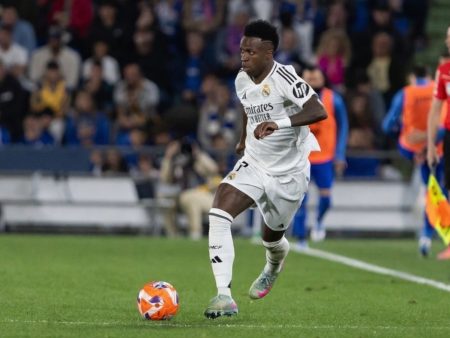The Tactical Chess Match: How Freiburg and Leverkusen Adapted Mid-Game
In football, the ability of coaches to alter tactics mid-match is often the mark of elite management. Adapting formations and styles on the fly allows teams to overcome in-game challenges and shift momentum, sometimes leading to dramatic turnarounds. A recent Bundesliga clash between Freiburg and Bayer Leverkusen provided an outstanding example of this dynamic, both sides shifting systems in real-time and reshaping the outcome with their flexibility.
Initial Approaches: Matching Up with Back Threes
Both Freiburg and Leverkusen began the match with three-man defenses, each hoping to nullify the other’s strengths. Freiburg lined up in a 3-4-1-2, with Woo-Yeong Jeong bridging midfield and attack, playing a key role in their high pressing scheme and then tucking in during defensive phases. Leverkusen mirrored this setup, opting for a 3-5-2 that often resembled a 5-2-3 in their pressing structure, with Kerem Demirbay frequently occupying wide left areas during pressing moments.
The tactical battle became evident early, as each side deployed a front three to directly match their opposition’s build-up, making central progression difficult for both teams. Leverkusen forwards pressed aggressively, focusing on blocking passes into Freiburg’s deep-lying midfielder Nicolas Höfler, while Schick and Andrich tightly monitored movements from the Freiburg center-backs.
On the opposite side, Freiburg’s front three managed to blunt Leverkusen’s advancing options, with Jeong expertly dropping in and pressing at opportune moments. High pressing led to turnovers, but neither team could effectively penetrate through the middle, resulting in a cagey and congested opening phase.
First Breakthrough and Initial Dominance
Despite Freiburg’s defensive solidity, it was Leverkusen who seized early control. A moment of composure from defender Odilon Kossounou, who carried the ball out under pressure, led to Demirbay scoring the opening goal with a well-taken shot. Kossounou continued to pose a threat in these forward surges, a rare attacking highlight from the back line. From there, Leverkusen appeared comfortable, alternating between 5-2-3 and 5-3-2 in defense, leveraging the extra man in midfield to control tempo.
Key Turning Point: Freiburg’s Shift to 4-2-3-1
The game’s momentum shifted significantly after halftime when Freiburg adjusted to a 4-2-3-1, prompted by an injury to Manuel Gulde. This move reverted them to the formation that had previously brought success earlier in the season. Instantly, Freiburg found greater fluidity, with players connecting between lines, especially out from the back where Vincenzo Grifo dropped into half-spaces and goalkeeper Mark Flekken became more involved in build-up.
This increased interplay generated attacking opportunities. A well-worked set piece brought Freiburg level, with Matthias Ginter heading home from a corner. The tactical switch fostered sustained possession and more coherent attacks, reestablishing Freiburg’s creative chemistry.
The Jeong-Grifo Connection and Freiburg’s Second Goal
Freiburg’s 4-2-3-1 formation also allowed creative players, such as Jeong and Grifo, more freedom to exploit spaces. As Grifo drifted into central and left channels, Jeong began floating between the lines, applying pressing and capitalizing on sloppy play from Leverkusen’s defense. Jeong’s alertness forced a crucial turnover, leading to Michael Gregoritsch’s goal—a testament to Freiburg’s clinical ability to punish mistakes when their formation allowed attackers close proximity and freedom.
Gregoritsch’s impact continued to grow, as his movement, timing, and finishing made him one of Freiburg’s top attacking threats. At this point in the season, he had registered four goals in five matches, quickly establishing himself as a focal point in Streich’s offense.
Leverkusen’s Tactical Response: Winger Introductions and System Switch
In response to Freiburg’s increasing threat, Leverkusen manager Gerardo Seoane reacted by switching back to a 4-2-3-1 formation as well. Key to this change was the introduction of Callum Hudson-Odoi on the left wing, with Moussa Diaby moving to the right. This width immediately troubled Freiburg’s full-backs—Hudson-Odoi’s pace and willingness to cut inside caused repeated problems and provided an overlapping platform for Sinkgraven to press forward, leading to a rapid equalizer. Hudson-Odoi delivered a pinpoint cross for Patrik Schick, who powered in his first goal of the season—a much-needed breakthrough for the striker in the absence of Florian Wirtz, the team’s usual playmaker in central spaces.
Set Piece Prowess and the Decisive Goal
As the match tightened, Freiburg leaned on their strength in set pieces. Another corner routine saw Christian Günter whip a ball to the near post, where Höfler flicked on for Ritsu Doan to finish at the back post. This goal not only secured the lead but highlighted Freiburg’s adaptability and intelligence in exploiting Leverkusen’s defensive vulnerabilities during dead-ball situations.
Closing Stages: Defensive Adaptations and Game Management
In the closing minutes, Freiburg transitioned to a more defensive 5-3-2 system to preserve their advantage, occasionally morphing into a 3-4-1-2 in attack to pose a threat on the counter. Their resilience saw them through, claiming a hard-earned victory and reinforcing the effectiveness of in-game tactical changes.
Lessons from a Tactical Duel
This encounter between Freiburg and Leverkusen stands as a quintessential tactical chess match. Both Christian Streich and Gerardo Seoane showcased their strategic acumen by altering formations in response to shifting patterns on the pitch. Freiburg’s bold switch to 4-2-3-1 restored their attacking verve and chemistry, while Leverkusen’s subsequent adjustment, combined with the impact of their wide players, ensured a thrilling, evenly contested second half.
The match emphasizes the importance of in-game tactical flexibility and the value of sticking to well-practiced systems. Had both teams utilized their favored setups from the start, the spectacle may have been less dramatic. Instead, the shifting shapes and tactical calculus delivered a contest rich with lessons for coaches, analysts, and fans alike.
About the Series: Exploring Modern Football Tactics
This analysis is part of the “Game of Numbers” series, dedicated to unpacking the tactical nuances of contemporary football. Each installment explores how player roles, formation shifts, and positional play continually redefine success on the pitch and shape the evolution of the beautiful game.







